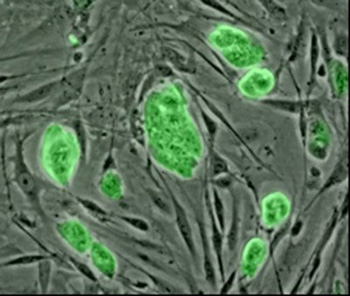Top News
US approves first 'ethical' human stem cell lines
(Agencies)
Updated: 2009-12-03 03:44
WASHINGTON: The US government approved the first 13 batches of human embryonic stem cells on Wednesday, enabling researchers using them to get millions of dollars in federal funding as promised by President Barack Obama in March.
|
 This undated handout image courtesy of the National Science Foundation (NSF) shows mouse embryonic stem cells stained with a fluorescent green marker for embryonic germ cells. [Agencies] |
The batches, known as lines, were made by two researchers at Harvard University and Rockefeller University using private funds, said Dr. Francis Collins, director of the National Institutes of Health.
In March, Obama lifted restrictions on human embryonic stem cell research imposed by his predecessor, George W. Bush.
He could not lift a restriction set by Congress, called the Dickey-Wicker amendment, that forbids the use of federal money to make the stem cells, which require destruction of a human embryo. But the decision made it possible for researchers to use federal funds to work with cells that others have made.
The NIH set up a panel to decide which stem cell lines met strict ethical restrictions. The cells, for instance, have to have been made using an embryo donated from leftovers at fertility clinics, and parents must have signed detailed consent forms.
Stem cells are the body's ultimate master cells. They make up days-old embryos and have the power to give rise to all the cells and tissues in the body.
Scientists hope to use them to transform medicine by growing new tissue and repairing damage. Opponents say it is wrong to destroy human embryos for any reason.











